![Carolina Herrera Bad Boy Review: Does It Last Longer? [2024]](https://bestperfumes.reviews/wp-content/uploads/2021/10/CAROLINA-HERRERA-BAD-BOY-Review-150x150.jpeg)
How to Make Your Perfume Oil Perfect: A Detailed Guide 2024
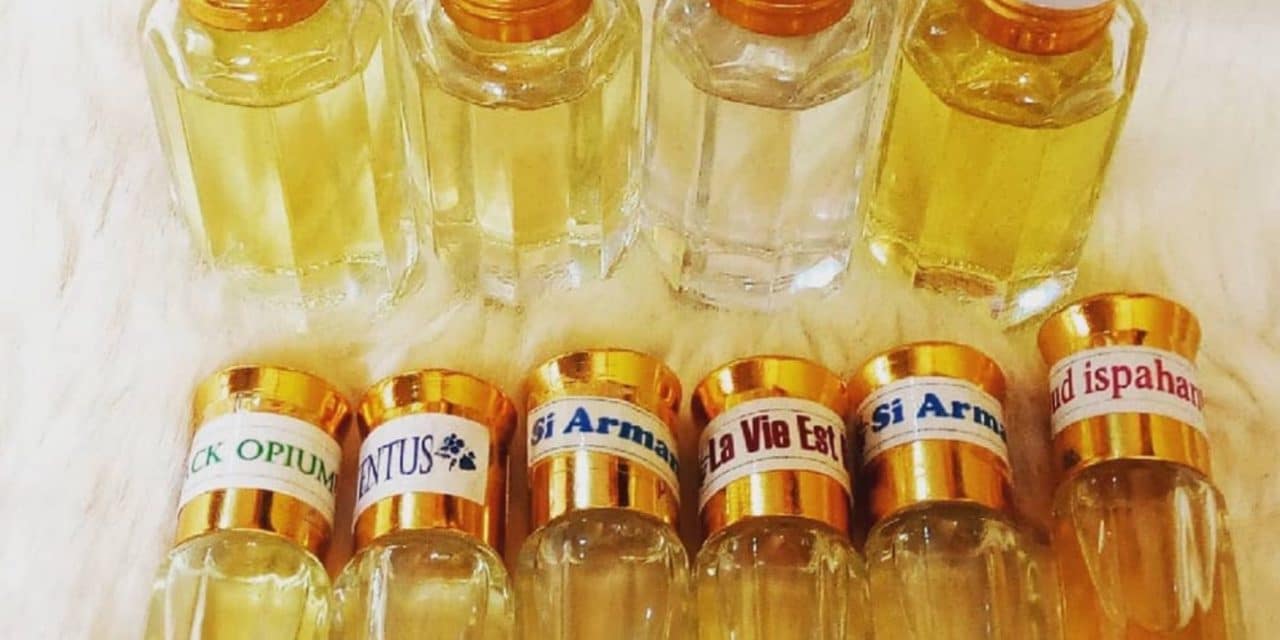
Have you ever wanted to own a perfume that smells differently but you couldn’t find it? You know, you have this exotic scent in your mind and you want to smell that way but no one understands you because no one could read your mind.
It becomes more frustrating when you can’t describe what you wanted and, even if you do, the perfumers won’t give it to you exactly the way your nose wants it.
Some people begin to mix different perfumes, hoping to find something closer to what they wanted but they don’t. This will end up making you feel bad. You will feel stuck with the exotic perfume signature you have in your imagination, which you would have loved to own as well as give to the world.
Some people have been lucky to find good noses that could figure out (so to say) the perfumes that will match or closely match their desires. For instance, Coco Chanel, the founder of the fashion house of Chanel, was able to achieve the brand’s Chanel No. 5 perfume this way.
She wanted a unique perfume that will give women a sense of cleanliness and freshness all day long and she found someone that created what she wanted. But then, it didn’t come cheap; and she had to commercialise what was created.
Because she created this perfume to sell to her customers, she wouldn’t mind spending a lot of money just to get what she wanted. But it won’t be easy for you to commission a special perfume fragrance if you are not going to sell it. It’s going to be too expensive for you. So, if you don’t own a perfumery or a perfume shop (or even a shop to sell perfumes), the only way to own that special perfume is by creating the perfume yourself.
Most times, people don’t know or believe what they are capable of achieving. When you tell some people they can make their own perfumes, they become surprised and often ask, “Is that really possible?” Well, the answer is yes, you can make your perfumes.
It doesn’t require rocket science to do that. If you make up your mind to make your perfumes right there in your home, you can do it and do it very well. Well, the reason we are here today is to let you know that you can make your DIY exotic perfume that no one will believe you created. You are going to be proud of yourself when you take this bold step.
So, in this piece, you are going to find out how to make that particular perfume you love. Specifically, this article will give you tips on how to make perfume oil. The good thing here is, first of all, you are going to make this perfume right there in your home, not in a laboratory – just a corner in your home is all you need. Another thing is, you will use only the materials in your home to make the perfume.
One thing I’m promising you here is that all the materials you will use for this project will come from your home – your kitchen and garden mostly – and they are all 100% natural.
Here is a bonus for you: you will also find out how to extract and produce essential oils from any natural aromatic material. If you extract essential oils and have them always available in your home, you will have the basic materials for making your perfumes.
That way, it will be easier for you to create your perfumes anytime you wish to. One more thing, the method for making essential oil you will find in this article will not require you to buy any equipment you don’t have already. It’s going to be a simple but effective method anybody can do at home.
Why You Should Make Your Perfumes
One very important question a lot of people ask concerning DIY perfume-making exercises is why they have to make their perfumes when there are a lot of good perfumes from good perfume brands out there.
Well, here’s the truth: you’re not making your perfumes to compete with the good perfume brands or to replace them (unless you want to).
You are going to find out how to make your perfumes for a lot of reasons that are too innumerable to be counted. Some of them may even be personal to you. However, here are some of the reasons people prefer making their perfumes and using them:
1. It’s fun. Some of the DIY experiments are done for the fun part of it. It always feels amazing knowing you can do some things all by yourself. That is the same thing with making the perfumes you wear, especially if their fragrances are exotic and unique. So, you can decide to go along with this experiment and have fun.
2. It’s cheaper. Perfumes don’t come cheap. The more renowned a company is the more expensive its perfumes are. But, you can recreate a fragrance that is close (or better) to what these companies are selling at a cheaper rate by using what you have in your kitchen and garden. So, why not give it a try?
3. It is convenient. Times may come when your perfume finishes but you don’t have the time (and sometimes, money) to replace it. When something like this happens, people find themselves living without perfumes. But you know you don’t have to stay without perfumes when you can create one for yourself. This is one good reason you should learn how to make perfumes with things you find in your home.
4. It’s safe. One of the things about making perfumes with natural materials is that you will avoid using perfume-making chemicals your body may react to. Apart from that, when you make your perfumes, you can avoid using the natural materials you are allergic to. But you know you can’t make such choices when you purchase perfumes. So, if your body reacts to perfumes because of some of the chemical contents they have, you should consider making yours.
5. You can choose your scents. Sometimes, when you see the perfume you like, it may have this particular scent you would have preferred if it was removed from the blend. But because you are not in a position to do so, you will have no other choice than to use what was offered to you. However, when you make your perfumes, you can decide not to add that particular fragrance to the blend. So, you will have what you wanted and remove what you don’t like.
6. It’s your signature. Of course, the perfume you are going to make will be customised to suit your taste. For that, the perfume will be unique because it is for you alone. Remember, you will have to make it the way you want it. It is your experiment and your creation. Let your imagination play its part here.
Let’s Look at the Accords
Before we proceed, let’s look at different perfume accords and how you may achieve them. A perfume accord refers to the stories your perfume tells. For instance, you may smell some perfumes and they will tell you about fruits, flowers, dews, rain, nature, woods, and so on. You may also come across those that will tell you about freshness, cleanliness, the seaside, summer, winter, and so many other things that will remind you of your experiences.
What this means is that the fragrance of every perfume has a story or two it tells. Once you smell a good perfume, the fragrance will remind you of something. It will generate images that will send messages to your five senses (touch, smell, sight, taste, and hearing). That story or image it generates is what we refer to as the perfume’s accord.
So, what story do you want your perfume to tell?
Some people create their perfumes by using any aromatic substance they see, just because they like the smell. It’s not bad to do it that way, but you should also consider the outcome of the experiment. This is why you should go decide what your perfume should smell like so you can decide how to arrive at the result.
You don’t have to worry about the accord of your perfume because the smell of the aromatic material you will use can help you to make that decision. However, you can go through the list provided below to see some of the commonest perfume accords we have. This will help you to decide the story you want your perfume to tell you and the people that come in contact with you each time you wear it.
Commonest Perfume Main Accords
There are many perfume accords you can achieve by experimenting with the aromatic substances in your home. However, below are the ones many people opt for. Remember, this experiment is your creation. So, feel free to try out different blends until you arrive at what you desire.
1. Citrus Accord: This accord, as you can guess correctly, gives you the imagination of the citrus fruit that dominates the fragrance. The reason people opt for it a lot is that it keeps them fresh when it is active. It is also refreshing when smelt. To achieve this accord, you add the essential oil from one or more of the following materials to the perfume:
- Lemon zest
- Orange zest
- Lime zest
- Grapefruit zest
- Bergamot zest
- Citron zest
- Tangerine zest
- Pomelo zest
- Blood orange zest
- Mandarin Orange zest
- Bitter orange zest,
- Lemongrass, etc.
NB: The zest of citrus fruits is the only material from which the aromatic oil or substance that gives the fragrance is obtained. The juice is not included.
2. Floral Accord: This is obtained from flowers. The smell of the perfumes with this accord reminds you of flowers. You may decide to use yellow or white flowers or just any sweet-fragranced flowers you can find around the garden to obtain this accord. So, when you spray or dab your perfume, the fragrance will remind you of the flowers you used. All the same, here are the commonest flowers (that is, the flower petals) people use to obtain this accord:
- Rose
- Honeysuckle
- Ylang-ylang
- Jasmine
- Lavender
- Freesia
- Gardenia
- Orange blossom (etc.)
3. Woody Accord: If you like being close to the woods, this accord is for you. It smells like wood, literally. If you add any of the materials that will yield this accord to your perfume, you will always imagine the smell of logs, the forests, or sawmill each time you spray or dab the perfume. If you want this in your perfume, you should look for
- Sandalwood
- Juniper
- Cedarwood
- Patchouli
- Pine
- Vetiver
- Spruce
- Cypress
- Fir
4. Oriental Accord: This accord is not so common but it is exotic. It gives off the illusion of being among the Orients. If you want to check it out, blend the fragrances from following materials:
- Vanilla
- Amber
- Sandalwood
- Vetiver
- Cedarwood
5. Spicy Accord: This accord is very hot and strong. You may have to go easy on it because it can become overpowering and offensive to those around you. If possible, when you obtain this accord, blend it with another accord to tune it down a little. It’s your experiment, remember, so be as creative as possible.
Well, in case you want to go spicy, here are some materials you should bring together for the perfume:
- Clove (go easy on this because it can overpower and subdue the other fragrances in the blend)
- Cinnamon
- Patchouli
- Vanilla
- Basil
- Oregano
- Ginger
- Nutmeg
- Anise
- Cardamom, etc.
6. Herbal Accord: This is another accord that is also hot and strong. It should be used subtly to avoid appearing offensive to others. Some of the materials needed for creating this accord are:
- Spearmint leaves
- Peppermint leaves
- Eucalyptus leaves and barks
- Rosemary needles
- Tea tree leaves, etc.
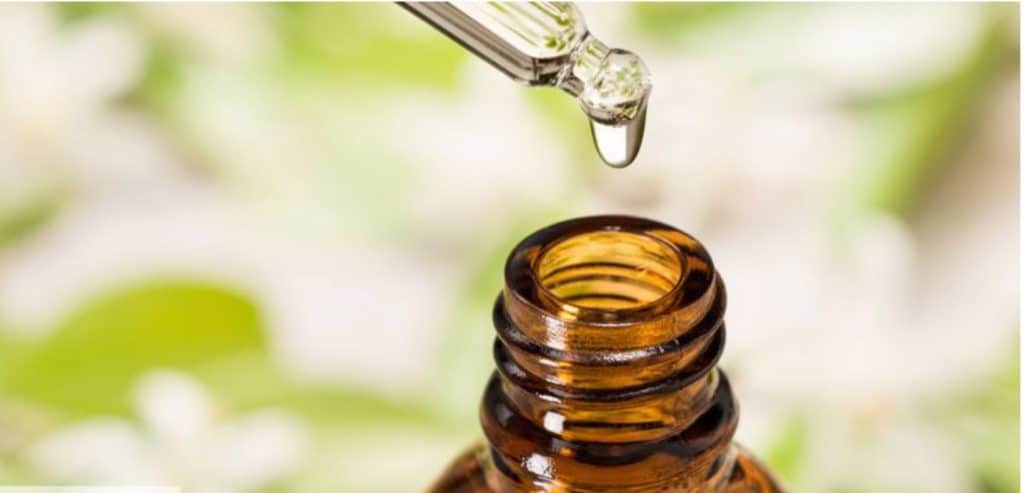
Making Your Essential Oil
This is a bonus section I talked about before. It’s added here because you need it before you can continue to the next section. Why you need to find out how to make essential oil is because it will be easier for you to make your perfumes after you have derived the essential oils from the plant materials.
You may decide to go straight to making your perfume without deriving the essence of the aromatic substances but the truth is, it may not yield the best result.
The reason is, you cannot blend different fragrances if you do this. Since it is not advisable to make perfumes by adding all the aromatic materials in one container (you have to derive their fragrances separately), you will have no other choice than to use essential oils or stick to just one aromatic material.
In this section, you are going to find out the different methods of obtaining the essential oils from the aromatic substances you are about to use.
The method that will be described here will not require you to set up a mini-laboratory in your home or cause you to spend money to buy many pieces of equipment you don’t already have. In other words, you don’t have to worry about facing difficulties as you obtain your essential oils because you won’t; they are very easy to secrete.
Every essential oil, as you must have known, contains the essence of a particular plant. The nutrients, pigment, and scent of the plant you used to make that oil are contained in the oil. So, when you want to choose the aromatic materials you will use to make your essential oils, go for the ones you don’t react to.
Essential oils can be secreted from plants and plant materials using different methods. The commonest methods you will see out there are the distillation and the mechanical expression methods. However, these methods will require you to buy some pieces of equipment and/or set up a laboratory each time you want to extract your oil.
Since you are doing a DIY perfume, which will require you to use only what you have in the kitchen, we won’t be into those methods. We are going to look into a simple method that works all the time. I know it will work for you too. So, here we go.
Materials you will need
1. The plant aromatic substance from which the essential oil will be extracted. Remember, the plant material you go for depends on what you wanted. It is entirely your choice to make. So, experiment with as many substances are can lay your hands on.
2. The carrier oil. This is the oil that will be used to extract the essence of the plant material. The oil you are going to use here should not have any scent so it doesn’t interfere with that of the plant material. However, some people prefer using scented oils because they love the flavours they add to their essential oils. But if you want to go for the non-scented oils, you can use jojoba oil, almond oil, or coconut oil. If you don’t have any of these, you can use olive oil, grape seed oil, canola oil, or safflower oil.
3. A stove. Some people use ovens too.
4. A pot or saucepan with a lid. You should go for a small pot because the quantity of the essential oil you are going to make right now will be small. If you get it right, you can increase the quantity during your next experiment.
5. Wooden spoon.
6. Strainer and cheesecloth.
7. A jug and/or a funnel.
8. A bottle with a lid. Dark bottles are mostly preferred here.
Procedure
i. Gather the materials you will use for the experiments together. This is very important because it will prevent you from running around, looking at everything is, when you are making the oil. So, get everything, including the plant materials, together before you start.
ii. Prepare your plant materials. If you have not separated your flowers’ petals from their stalks, this is the time to do that. If you are going to make the oil from any of the citrus fruits, you should scrape the zest and set them ready. Grind the materials that should be grounded and get everything ready.
iii. Wash and dry your pot.
iv. Put the plant material into the empty pot. Remember, you should not make one type of essential oil from more than one aromatic substance. Each substance should have its own essential oil.
v. Add the carrier oil to the pot. You can decide to add the oil into the pot before putting the plant material, it’s your choice. However, just make sure all the plant materials you are using are soaked with oil.
vi. Cover the pot with its lid.
vii. Place the pot on the stove and turn it on. Reduce the heat to the lowest temperature the stove can give.
viii. Allow it to cook for 5 to 6 hours. You don’t have to leave it to cook for 6 hours straight; you can break down the 6 hours into two or three different periods. For instance, you can allow it to cook for 3 hours and then turn off the heat. When next you are free to monitor the pot, you can turn on the heat to complete the work. Always stir the content of the pot every hour to help the plant material release its oil.
ix. When you have completed the cooking, transfer the content of the pot into the sieve and let it strain into the jug.
x. Put the funnel in the bottle and cover it with the cheesecloth. Then pour the content into the funnel so it goes directly into the bottle.
xi. Cover the bottle and keep the oil aside until you’re ready to make your perfume.
NB. Use this same process to make the essential oil for each of the aromatic materials you want to use for the perfume. When you have made enough essential oils to start experimenting with the perfume making, you can go over to the next section. Remember, you are not going to use all the essential oils you made for this perfume. As you will see later, you will only need a few drops of the oils to make your perfume.
Time to Make your Exotic Perfume
This is it. This is where you are finally going to find out the procedure for making your perfume. Trust me, the work is very simple. But before we go into that, let’s look at the essential oils you can combine to create that wonderful fragrance you love. Let’s first look at what note means and some of the best fragrances you can use for each note.
Perfume Notes
Every perfume has depth. These depths are released as notes. This means that the fragrances in every perfume are not released at the same time; they come one after the other. But it is only possible if you blend many fragrances in one perfume.
To achieve good notes in your perfume, you have to add essential oils or whatever aromatic content you are using in stages. Specifically, there are three stages by which fragrances are released. These are called the head or top note, the heart or middle note, and the base note.
The top note is the first waft of fragrance blend you receive when you open a perfume bottle or spray it. It acts as the announcer: it tells people someone is wearing perfume at that moment. But after some minutes (say 15 minutes), the top note will dissipate and the middle note will be activated.
This middle note is the heart of the perfume. That is why it is also known as the heart note. This is the fragrance of a blend of fragrances that follows you around for four to five hours, depending on the longevity of your perfume. When this note dies out, the base note comes alive.
The base note will stay with you (though it’s not always loud) like a faithful friend until you spray your perfume again to retouch or you change into cleaner clothes. It is the base note that keeps you and your clothes from smelling awful when the middle note has left you.
Bringing these three notes into consideration will make you choose the essential oils for your perfume wisely. Remember, the top note will determine whether you will be happy when you spray your perfume. So you have to go for the scent/s you love.
The middle note is what makes the people around you smile at you because you smell good. So, go for the middle note that won’t be offensive. And then, the base note will stay with your clothes until you wash them. You will need to use something beautiful and good too.
However, let’s look at what people love using for their different notes:
Top Notes: For your top notes, you can choose any or more of the following essential oils:
- Tea tree
- Spearmint
- Lemon
- Orange
- Lime
- Cinnamon
- Bergamot
- Grapefruit
- Eucalyptus
- Peppermint
- Mandarin orange
- Lemongrass
- Tangerine
Middle Notes: Try any of the following or a blend of some of them for this note:
- Cypress
- Cardamom
- Lavender
- Nutmeg
- Juniper
- Rosemary
- Pine
- Spruce
Base Note: The following work best here:
- Clove
- Cedarwood
- Ylang-ylang
- Vanilla
- Vetiver
- Rose
- Sandalwood
- Jasmine
- Patchouli
- Ginger
- Cinnamon
NB: Remember, this is your choice. You have to decide what suits you best.
Materials Needed for Making the Perfume Oil
1. Your essential oils. Remember, it is your experiment and your choice. So, choose what suits you here.
2. The carrier oil. Remember we are making perfume oil, so you need a carrier oil. We will still maintain the use of jojoba oil, almond seed oil, coconut oil, grape seed oil, and other unscented light oils.
3. A bowl, jug, or any container you want to use to mix the perfume.
4. A funnel.
5. A bottle with a lid. Dark bottles are preferred here because they help to keep the sun away.
6. A dropper. You don’t pour essential oils, you drop them. You actually count the number of drops of each essential you add to the blend.
7. A stirrer. You can use your lobster pick for this. But if you have another object, preferably a plastic material, that is straight and thin, use it. The most important thing here is that you have something that can help you stir the perfume perfectly as you make it.
Procedure
1. Gather the materials together.
2. Group the essential oils you will use as the base note, middle note, and top note separately. That way, you won’t use one for the other. It will also make your work easier and faster.
3. Pour about 30ml of the carrier oil into the bowl. You can measure out the oil with a tablespoon or the cap of the bottle. A tablespoon is approximately 15ml; so three tablespoons of the carrier oil may give you something close to 30ml. But if you have another accurate measuring container, do use it.
4. Drop the essential oil for the base note into the carrier oil. For the 30ml carrier oil, it will be, usually, 12 drops of the essential oils you are going to use. If you want to use three essential oils for the base note, you should decide how to share out the 12 drops to them.
5. Drop the middle notes into the blend. For the 30 ml carrier oil, it should be 24 drops of essential oils, shared out among the chosen ones.
6. Add drops of the top note. For the 30ml carrier oil, it should be 36 drops of the essential oils. Remember to share it out amongst the essential oils you will use.
7. Stir the blend very well.
8. Transfer the mixture into the bottle and cover tightly.
9. Shake the bottle very well so the oils can blend very well.
10. Keep the bottle in a dark, cool, and dry place for, at least, two days. This will allow the oils to infuse.
11. You can go ahead and use your perfume. Remember to dab them on your pulse points (wrist, elbow, collarbone, behind the ear, and knees).
NB. Determining how many drops of essential oils to add is where the arithmetic in perfume making becomes tricky. If you add a lot of essential oils, the outcome will become too overpowering. My suggestion for this:
a. Increase the quantity of the essential oil you love and reduce that of those you don’t.
b. Go low on spicy and hot essential oils.
c. Increase the quantity of the subtle oils so they are not subdued.
d. Have fun with the experiment by blending different accords to see the one that will give you the desired result. Remember to record your experiments so that when you create what you love, you will know the formula that yielded that result.
ALSO READ: How To Make Perfume At Home: An Easy Step By Step Guide
Conclusion
As you can see, it is quite easy to create your perfume oil right there in your kitchen, balcony, pantry, or any part of your home you want to. And you don’t have to break the bank to do that.
All you need here is to make your essential oils and you’re good to go. The marvellous thing here is that you can experiment with many aromatic substances as you can. So, feel free to be exotic and creative; that’s why you’re making your perfume.


![Chanel No. 5 Review: Does It Smell Good And Last Longer? [2024]](https://bestperfumes.reviews/wp-content/uploads/2021/10/Chanel-No-5-Review-440x264.jpeg)
![Dolce and Gabbana Velvet Rose Review: Is it a Quality Perfume? [2024]](https://bestperfumes.reviews/wp-content/uploads/2021/03/Dolce-and-Gabbana-Velvet-Rose-150x150.png)
![Dolce and Gabbana Velvet Pure Review: Does it Smell Good? [2024]](https://bestperfumes.reviews/wp-content/uploads/2021/03/Dolce-and-Gabbana-Velvet-Pure-Review.png)
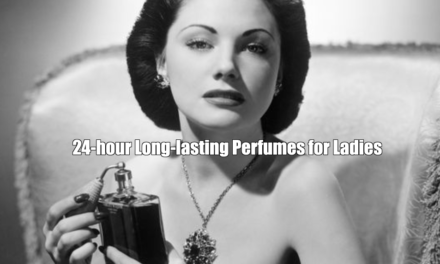
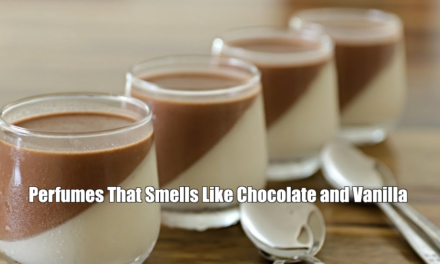
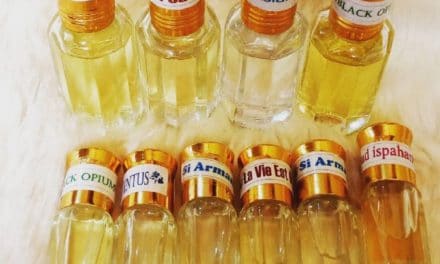
![How to Make Perfume with Essential Oils: A Complete Step By Step Guide [2024]](https://bestperfumes.reviews/wp-content/uploads/2021/11/How-to-Make-Perfume-With-Essential-Oils.jpeg)
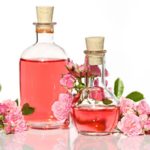
![Why Perfumes Fades So Quickly On the Body [2024]](https://bestperfumes.reviews/wp-content/uploads/2021/01/Why-Perfumes-Fades-So-Quickly-150x150.png)
![The Ingredients For Making Perfume of High Quality [2024]](https://bestperfumes.reviews/wp-content/uploads/2021/01/Ingredients-For-Making-Perfumes.jpg-150x150.png)